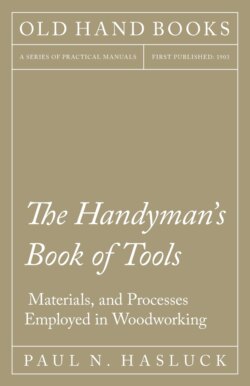Читать книгу The Handyman's Book of Tools, Materials, and Processes Employed in Woodworking - Paul N. Hasluck - Страница 49
На сайте Литреса книга снята с продажи.
ANGLES OF CUTTING EDGES.
ОглавлениеWhatever the amount of the force required to bend the paring, it is clear that the smaller the angle at which the chisel is sharpened the smaller will be the horizontal component f (Fig. 130), and, consequently, the smaller will be the thrust required to make the cut. This shows the advantage of sharpening at a small angle; for, if the angle be greater than is necessary, the extra force required is wasted in bending the paring to a sharper curve. To avoid complication, the sharpening of the chisel is shown as one bevel, instead of the two produced by the successive actions of grindstone and oilstone (see p. 39). When the oilstone bevel is very small, the reaction C may be regarded as taking place (in cutting wood, at any rate) between the grindstone bevel and the paring; but when the oilstone bevel is very wide, reaction takes place chiefly between the latter bevel and the paring; and since it has a greater angle than the grindstone bevel, more force is required in using the chisel. Hence it is desirable to grind the chisel frequently.
Fig. 131.—Inclined Paring with Chisel.
